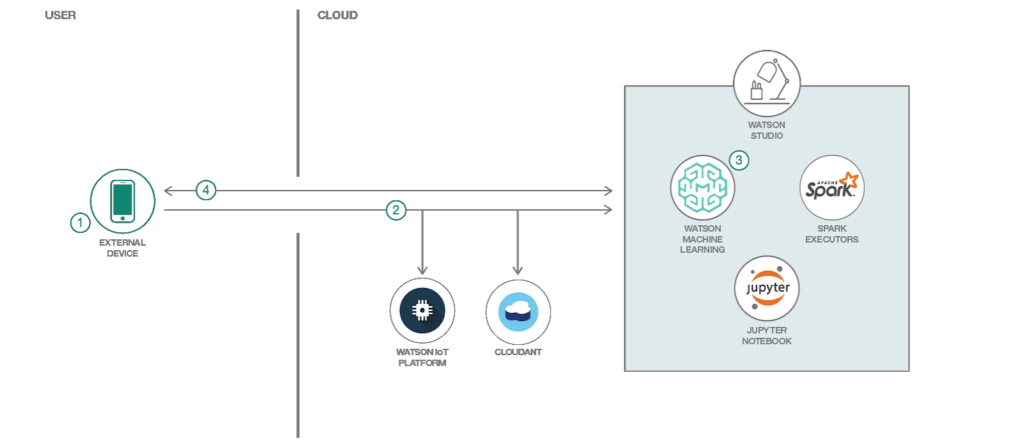Individuals the world over are becoming increasingly health conscious, and as a result, web-based mobile health apps are a fast-emerging trend. These apps help an individual monitor their health literally at a tap of their smartphone screens.
What does a mobile health app offer?
A web-based mobile health app is designed to offer personalized healthcare to an individual. For instance, the user can track and monitor their pulse rate using their mobile phone. The pulse rate once thus obtained can be evaluated to get the most accurate value using machine learning.
Process summary
Once the code pattern has been established, what remains is to develop and deploy a web-based app that can be made available on a user’s mobile phone. The aim of creating this app is to provide the most accurate values in reading and analyzing pulse rates.
Process description
To develop a web-based mobile health app requires intensive machine learning. A complex system, machine learning itself involves an in-depth understanding of the software and hardware deployed in the process. A developer needs to ascertain how best machine learning libraries can be installed, and also have to put together a framework within which these libraries can be configured.
Using the Watson Machine Learning on IBM Cloud and Watson Studio, a health app can be developed. This app, known as MyPulse, uses a gyroscope for pulse metrics. It can seamlessly read live data that is generated in around 60 seconds and is able to transmit the data in real time. This data is then analyzed to predict the heart rate in a matter of seconds, and the user is given an accurate reading in beats per minute (bpm).
Process flow
Outlined below is the process flow that a developer can follow in order to deploy a web-based mobile health app.
- Users go to the web app (MyPulse) in a browser on their smartphones. To take their pulse rate, they hold the phone in their chest.
- The data values are sent in real time to the IBM Cloud database, Watson IoT Platform, IBM Watson Studio and service of Watson Machine Learning.
- Watson Machine Learning validates the data with the deployed machine learning model in real time.
- The predicted pulse rate values from the trained machine learning model is sent back to the web app (MyPulse). The data will be displayed on the front page of an app in real time. Users can enter their own values and receive immediate feedback from the model of machine learning.
Instructions for pattern creation
A health app of this nature can provide accurate tracking of an individual’s pulse rate on almost all devices currently, including mobile phones. It provides gyroscopic metrics and logs data in a Cloudant database and is able to display the information in real time, on the Watson IoT Platform as well.
The detailed steps for this pattern you can find here: README. The steps will show you how to:
- Create the Node.js app.
- Set up the Watson Machine Learning service in IBM Cloud.
- Set up the machine learning model in IBM Watson Studio.
- Try it out on your smartphone.
Other uses and applications
A web-based mobile health app has uses and applications that go beyond recording and helping to monitor an individual’s pulse rate. Being easy to access, mobile health apps provide immediacy to their users, irrespective of user location, which is paramount when it comes to healthcare. The right app can empower an individual with relevant information pertaining to their health and this enhance treatment quality, offering opportunities to ensure their safety and to an extent, prepare them with an understanding of common illnesses.
It has been proposed that these apps can be explored as a medium by which for instance, an individual’s eating habits can be monitored. Given that a large population function with a mobile phone, the device can be used to track a person’s health across several parameters. An app that can monitor eating behavior, can provide customized information that can help an individual modify and subsequently enhance their diet and exercise regime.
Healthcare mobile apps are gaining popularity among hospitals and health systems as well, to facilitate doctors and other healthcare professionals in their patient care. For instance, an app can be used both by medical professionals and patients to schedule consultations and visits. A doctor can store and retrieve medical data at will, facilitating patient care. This would significantly cut down the time taken by a doctor to gather previous medical records if the information can be made available on a healthcare app.
The bottom line
A web-based mobile health app that uses machine learning makes for a user-friendly, more enhanced customer experience. Such apps can give rise to customized solutions that not just understand but also assist individuals. For the savvy healthcare professional, it becomes easier to prioritize their work and provide best-in-class treatment to their patient base. All in all, reason enough for web-based mobile health apps to become the thing of the future.
For more details visit : – https://ibm.co/2EJbUMp



Leave A Comment